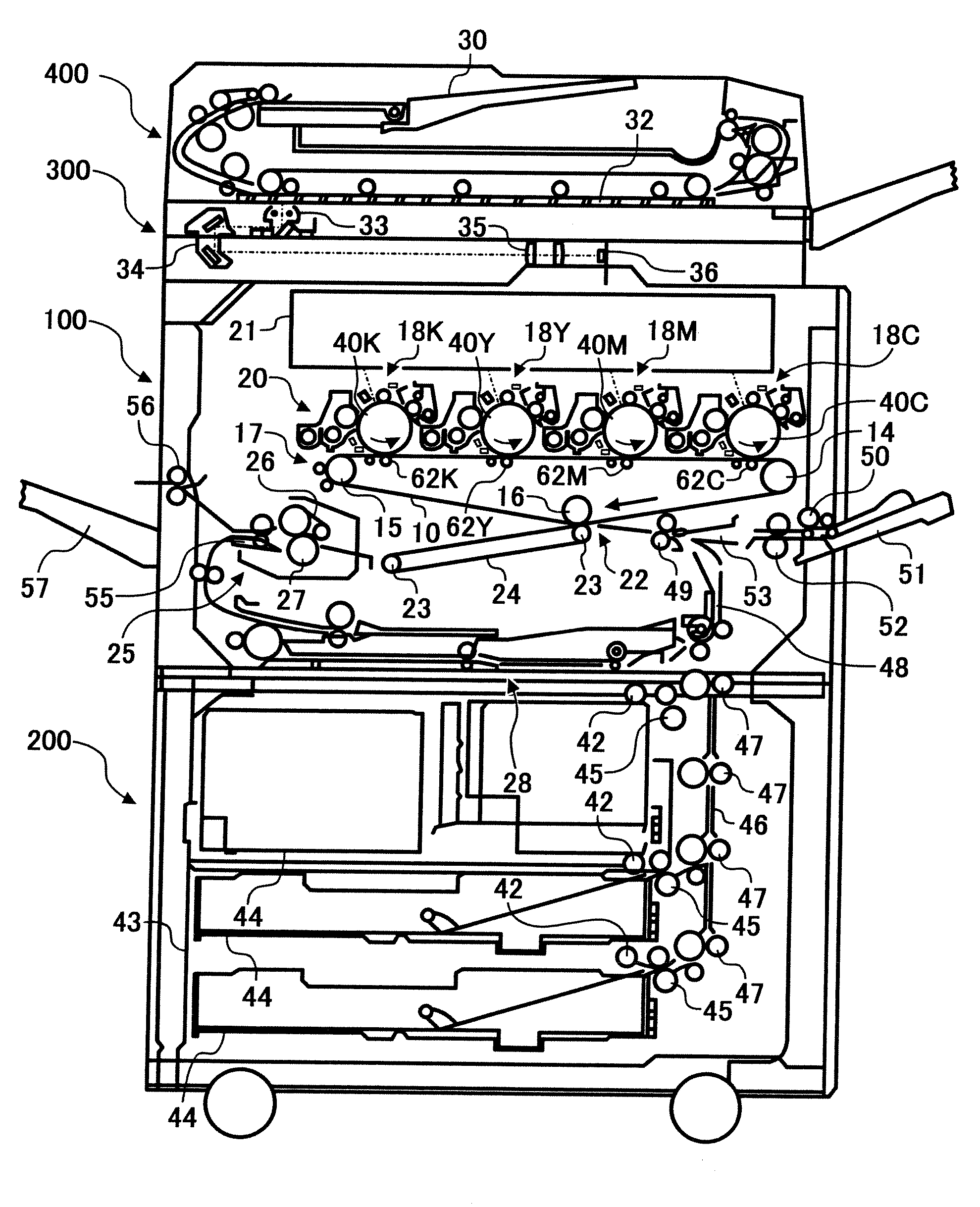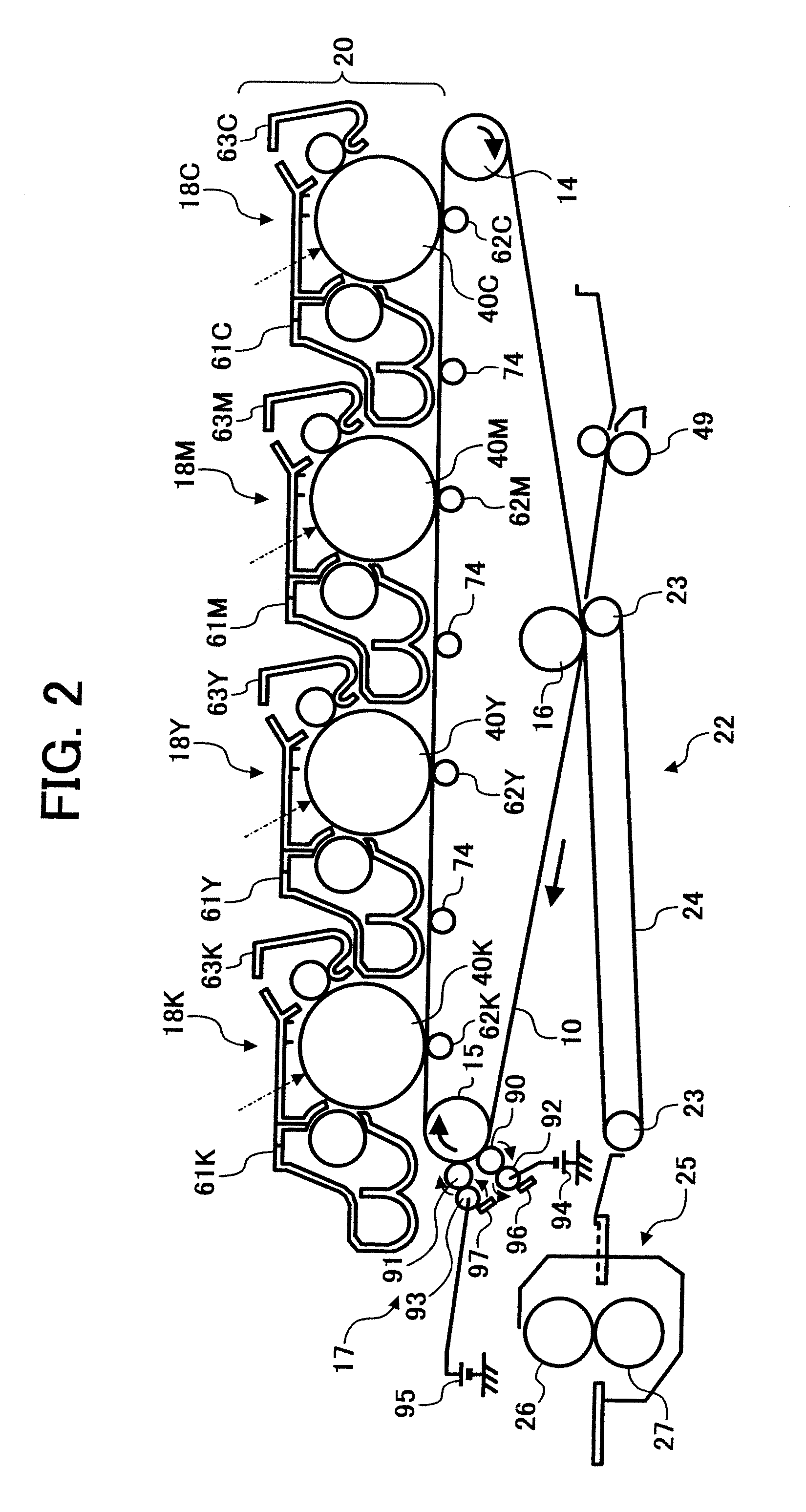Abnormality determining method, abnormality determining apparatus, and image forming apparatus
a technology of abnormality and determining method, applied in the direction of digital output to print units, instruments, electrographic processes, etc., can solve the problems of increasing control complexity, user time loss, and increasing time-consuming, so as to avoid the effect of increasing the complexity of control
- Summary
- Abstract
- Description
- Claims
- Application Information
AI Technical Summary
Benefits of technology
Problems solved by technology
Method used
Image
Examples
first embodiment
[0090] The first embodiment mainly serves to achieve the aforementioned first object of the present invention.
[0091] First, before describing an abnormality determining apparatus to which the first embodiment is applied, an example of an image forming apparatus serving as the detection subject of the abnormality determining apparatus will be described.
[0092]FIG. 1 is a schematic constitutional diagram showing the copier serving as an image forming apparatus which may be used as the detection subject of the abnormality determining apparatus to which the present invention is applied. The copier comprises image forming means constituted by a printer unit 100 and a paper feed unit 200, a scanner unit 300, and an original conveyance unit 400. The scanner unit 300 is attached to the top of the printer unit 100, and the original conveyance unit 400, constituted by an automatic document feeding device (ADF), is attached to the top of the scanner unit 300.
[0093] The scanner unit 300 reads...
second embodiment
[0271] The second embodiment mainly serves to achieve the aforementioned second object of the present invention.
[0272] Note that FIGS. 1 to 13 and 17 to 19 and the description pertaining to these drawings, which were referenced in the first embodiment, are also applied substantially to the second embodiment. Accordingly, repetitive description has been omitted, and the particular features of the second embodiment are described in detail.
[0273] First, the basic constitution of an abnormality determining apparatus according to the second embodiment will be described.
[0274] It is assumed that the detection subject of this abnormality determining apparatus is the same copier as that described up to this point, and that the abnormality determining apparatus determines the presence of an abnormality in the interior of the copier.
[0275] The constitution of the main parts of an electric circuit in this abnormality determining apparatus is shown in FIG. 21. As shown in the drawing, the a...
third embodiment
[0355] The third embodiment mainly serves to achieve the aforementioned third object of the present invention.
[0356] Note that FIGS. 1 to 3, 5 to 13, 17, and 18, and the description pertaining to these drawings, which were referenced in the first embodiment, are also applied substantially to the third embodiment. Accordingly, repetitive description has been omitted, and the particular features of the third embodiment are described in detail.
[0357]FIG. 37 shows the basic constitution of an abnormality predicting system comprising a state determining apparatus according to the third embodiment. A state determining apparatus 801 comprises an information obtaining unit 802 serving as information obtaining means, an index value calculation unit 803 serving as index value calculating means, and a determination unit 804 serving as change of state determining means. The information obtaining unit 802 obtains a plurality of types of information relating to an image forming operation of an ...
PUM
 Login to View More
Login to View More Abstract
Description
Claims
Application Information
 Login to View More
Login to View More - R&D
- Intellectual Property
- Life Sciences
- Materials
- Tech Scout
- Unparalleled Data Quality
- Higher Quality Content
- 60% Fewer Hallucinations
Browse by: Latest US Patents, China's latest patents, Technical Efficacy Thesaurus, Application Domain, Technology Topic, Popular Technical Reports.
© 2025 PatSnap. All rights reserved.Legal|Privacy policy|Modern Slavery Act Transparency Statement|Sitemap|About US| Contact US: help@patsnap.com



